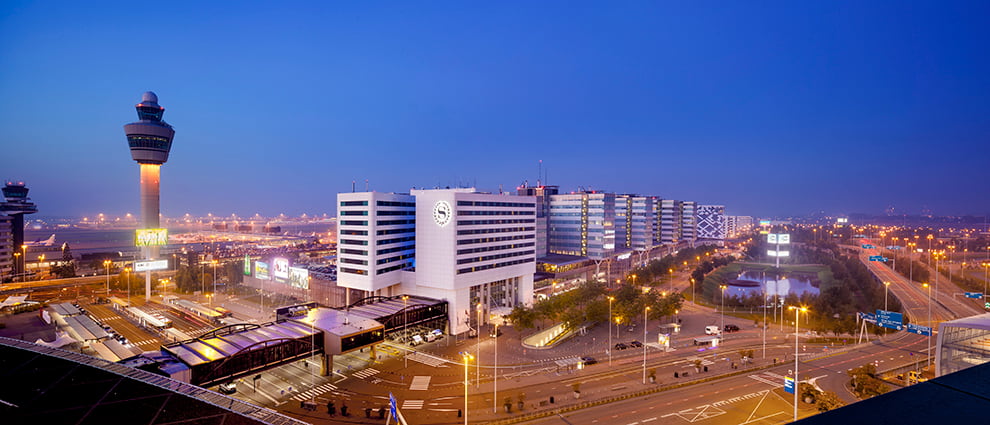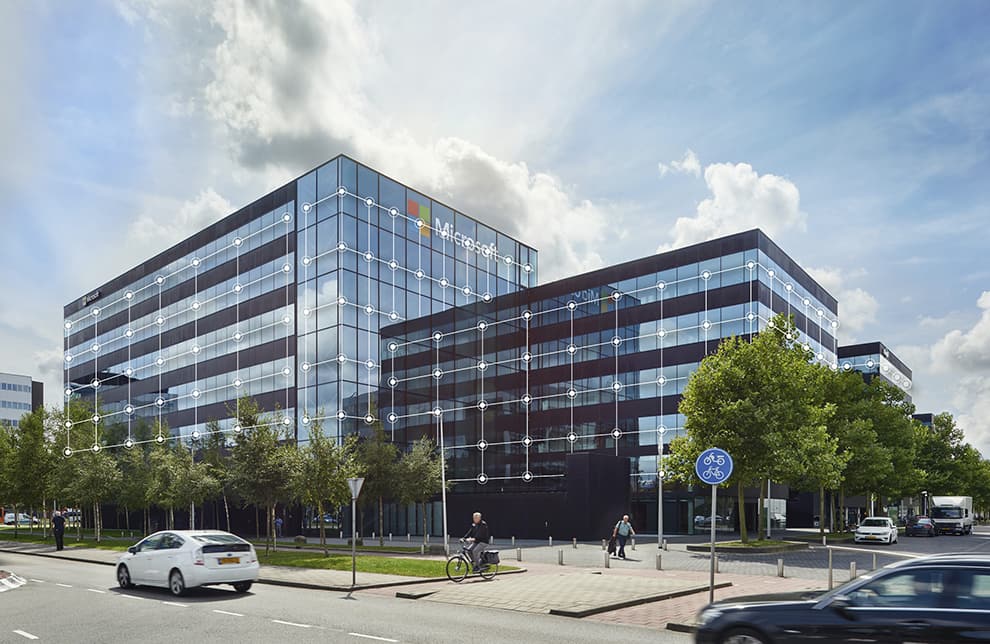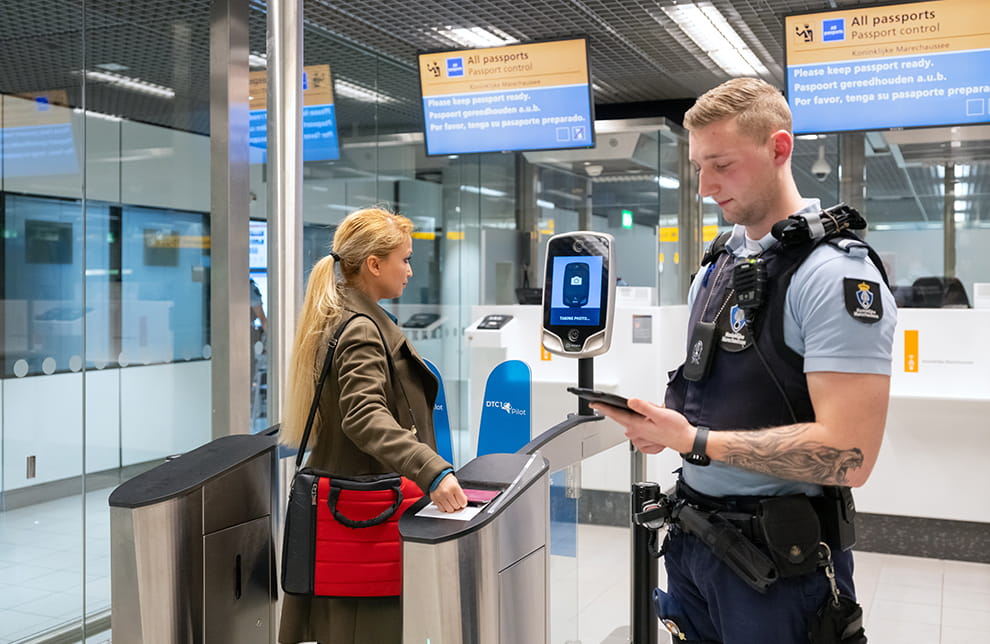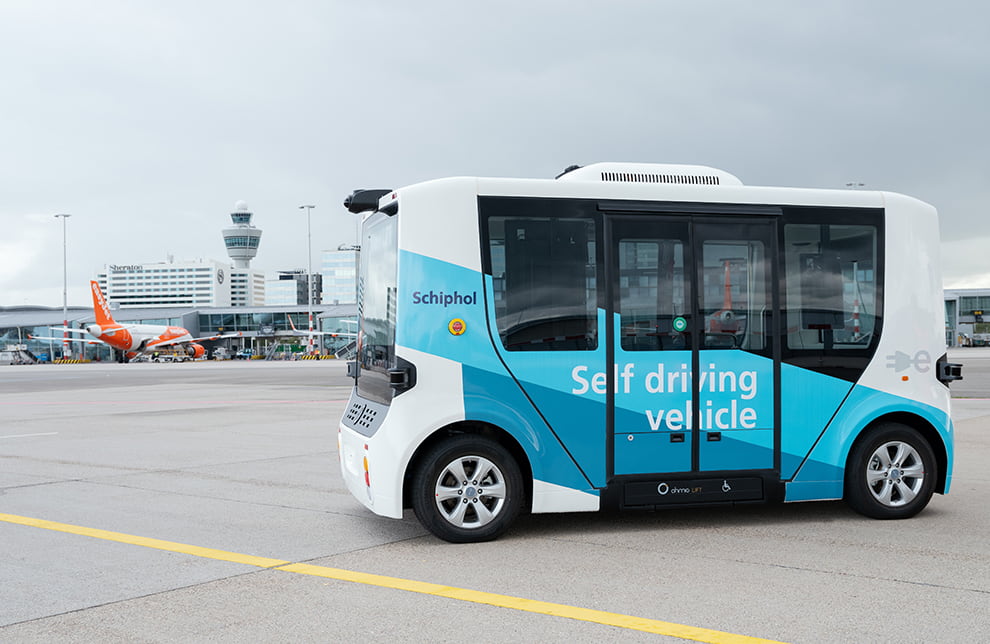By Erik Felëus, Schiphol Real Estate: A shared vision for Smart Schiphol Airport City
We at Schiphol have been building Schiphol Airport City for over 30 years. The world of real estate is constantly evolving, with technological and digital innovations playing an important role in this sector, as in so many others. These developments help us to improve our buildings and make them more flexible and more sustainable. The purpose of this blog is to give you an insight into our vision for the future: a Smart Schiphol Airport City full of Smart Buildings.

Schiphol Airport City
First of all, let's think about what Schiphol Airport City actually is. As an international hub, Schiphol attracts many different organisations, which have chosen to locate at or around the airport. Schiphol actually includes over 670,000m² of commercial real estate. That includes offices and cargo buildings, which are located in several different areas. Each area is unique. Every day, over 60,000 people come to work at Schiphol. That large number means that Schiphol is actually more like a small city.
Our vision
When you look at Schiphol as a small city, you also need to take into account issues around buildings, mobility, energy supply and recreation. We strive to provide a working environment that facilitates all users, but also one that surprises and inspires. We are constantly talking to our ‘residents’, our tenants, so that we can actively respond to their wishes. Smart and sustainable technology, such as smart ‘vehicle to grid’ EV charging stations and advanced climate sensors, are helping us to fulfil those wishes and add real value. These technologies enable our tenants to use their work locations even better, and we as real estate managers can use the data generated by these systems to manage our buildings and areas more effectively.

Strategic pillars
We approach our work as real estate managers on the basis of four strategic pillars.
- Flexibility: solutions that will grow and evolve with you.
- Well-being: respect for people, companies and the planet. Reducing our carbon footprint and energy consumption while continuing to provide the best possible user experience.
- Making connections: a community that allows companies and their people to grow by facilitating connections, knowledge sharing and personal development.
- Inspiration: an inspiring work environment that brings out the best in people.
Smart buildings make up smart areas
As Schiphol Airport City continues to grow, we are working towards a Smart Schiphol Airport City that is made up of a collection of Smart Buildings. The term ‘Smart Building’ means more than just using the latest technology to incorporate smart features into a single building. In our vision, systems and devices are all interconnected – both within individual buildings and between buildings. We use technology primarily to meet the needs of all our tenants.
Definition of a Smart Building
A Smart Building is a dynamic and intelligent system that includes both hardware and software. It uses data and AI to respond to the immediate and evolving needs of its occupants, and contributes to the long-term goals of its owners.

Why launch a blog?
Smart development is not something that you can do alone. Our aim for this blog series is to introduce current and possibly new partners to our concept of ‘Smart Buildings’ and to invite them to become part of our ecosystem.
This blog is the first in a series in which we will discuss a range of themes:
- More information on our target groups, the definition of a Smart Building and what this means from an operational and management perspective
- The various themes, opportunities and initiatives through which Smart Buildings add extra value
- The Schiphol platform that we use to store, visualise and share data
- Our Schiphol Real Estate Roadmap for Smart Buildings by 2030.
- All the diverse aspects of our approach: from smart construction to improving well-being, from increased flexibility to promoting connections and making an inspiring Schiphol Airport City a reality.
- Sharing all the lessons that we learn and insights we obtain on this development journey
Read the previous blogs
-
Tap and go with your Digital Travel Credential!
Published on:Can you board and cross the border faster with a digital travel document? At the request of the EU, we are testing a DTC together with the government and KLM.

-
Test capturing ultrafine particles with droplets
Published on:We are working diligently to reduce the amount of ultrafine particles. A possibility is the use of water droplets to remove ultrafine particles from the air.

-
Autonomous Bus Initiative
Published on:Our ambition: operating the world's most sustainable and top-tier airports by 2050. With this in mind we're putting autonomous buses to the test on airside.
